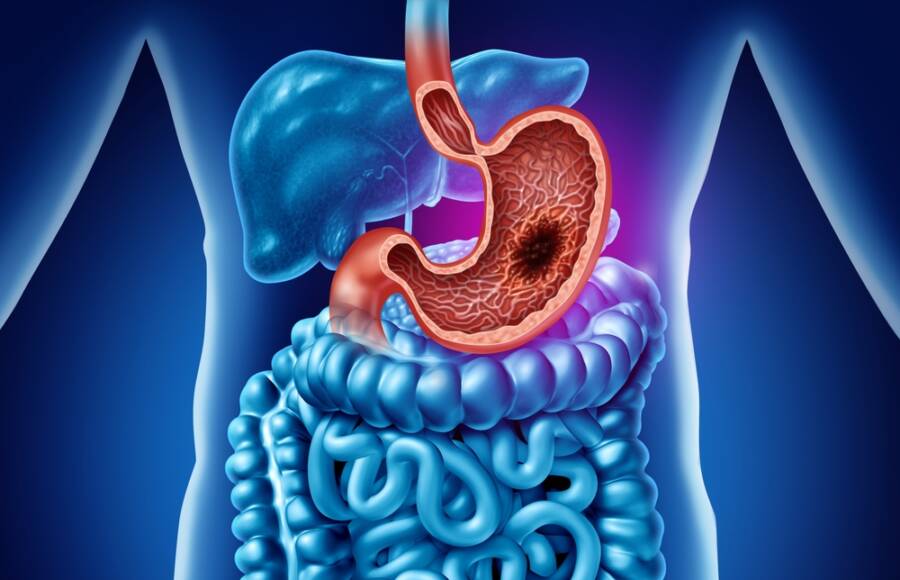Now, it’s easier to get tested for every genetic disease!
You’ve probably seen many people that are living a healthy lifestyle and somehow they have a certain disease they have to live with. Genes are extremely important when it comes to one’s health and development, and somehow, that’s good and bad at the same time.
Genetic disorders happen when there’s an unusual mutation in the DNA of body cells. They are usually inherited, meaning that you have to get them from your parents. But don’t worry, sometimes even if you are at risk of developing a certain disease, it might never manifest. That’s why, testing is important, so you can take measures in order to stay safe and healthy.
There are illnesses that result only because of a single faulty gene, but there are also Multifactorial inheritance disorders, meaning that, even if the risk exists, the disease is triggered by environmental and lifestyle choices. Here are 11 genetic disorders you didn’t know you can get tested for.

1. Breast Cancer
Women are more prone to develop breast cancer than men (about 1 out of every 100 breast cancers diagnosed in the United States is found in a man), and with age, the risk increases. Moreover, having a close relative with breast cancer (like your mom, or sister), doubles the risk.
Hereditary breast cancer is usually caused by a mutation in the BRCA1 or BRCA2 gene. They usually make proteins that repair damaged DNA, but mutations can have the opposite response, leading to abnormal cell development.
The BRCA gene test can determine if you have any mutations in your DNA, that could significantly increase your risk of developing breast cancer. If you have a case in your family, the recommended age for testing is around the age of 25 to 35 years old. It’s easier to prevent than to treat.
2. Obesity
In 1999, Federal Health Officials agreed that America is going through an “obesity epidemic”, but since then, things only got worse. According to the Center for Disease Control (CDC), approximately 36.9% of Americans age 20 or older are obese.
Obesity is considered a Multifactorial Disorder, that’s caused by genetics and environmental factors, like indulging in binge eating or having a sedentary lifestyle. According to recent studies, there might also be a mutation in the MC4R gene, that causes extreme hunger, which leads to overeating.
Unfortunately, obesity is a high-risk disease that can lead to heart problems, diabetes, and a weak immune system. If you’re struggling with overeating, here’s something that might help you.
3. Alzheimer’s disease
Alzheimer’s is a disease that causes memory loss and cognitive problems and it can interfere with daily life. It is also the most common cause of dementia and it usually starts showing symptoms after the age of 65.
Alzheimer’s can be hereditary, meaning that, if a close relative (like a parent) has it you are at risk of developing it too. But it can also be influenced by certain genes. Studies have shown that the APOE-e4 gene is the one that has the strongest impact on the risk of developing the disease.
We all have a copy of the APOE gene from one parent, but those who inherit APOE-e4 are genetically prone to having Alzheimer’s. Having this gene can also lead to the early development of the disease, meaning before the age of 65.
4. Diabetes
Diabetes is another multifactorial inheritance disorder. Studies have shown that type 2 Diabetes can be liked to genetics, but it is usually triggered by other factors, like being overweight and living a sedentary lifestyle.
There are several genes that might be linked to the development of diabetes, like TCF7L2 that is responsible for the secretion of insulin and glucose, or GCGR, responsible for glucose regulation. Mutation in any gene that is linked to insulin production, or the movement of glucose might lead to diabetes. It’s important to get genetic testing in order to determine any inherited mutation. A healthy lifestyle is really important in this case.
5. High blood pressure
High blood pressure, also called hypertension is a disease that causes the blood to flow through blood vessels with a higher pressure. HBP itself can cause symptoms like headaches, dizziness, nose bleed, or chest pain, but if left untreated, or better said, uncontrolled, it can lead to life-threatening conditions, like heart attack, stroke, or aneurysm.
Studies have shown that, aside from lifestyle and environment, genetics also play an important role when it comes to the risk of developing high blood pressure. Many times it’s inherited, so having a family member that has the disease will increase your chances of developing it. Moreover, studies showed that some modifications to certain genomes can lead to hypertension. If you have high blood pressure, it’s best to stay away from these foods!
6. Cystic Fibrosis
Cystic Fibrosis is a genetic condition that leads to thick and sticky mucus build up in organs, which leads to damaged respiratory and digestive systems. This disease is caused by a defect gene, more specifically, the CFTR gene, which controls the movement of water in and out of the cells.
When this abnormality is present, the gene is not able to do its job properly, which leads to thick mucus. The most affected organs are usually the lungs, pancreas, liver, and intestines.
The child has to inherit the gene from both parents in order to get the disease. The immunoreactive trypsinogen (IRT) test, which is used to detect levels of protein IRT in blood, along with pulmonary tests and CT scans are able to determine if you have the disease or not.
7. Hemophilia
People with hemophilia usually have low levels of clotting factors proteins in their blood, meaning that the blood doesn’t clot properly. In this case, it leads to spontaneous bleeding, pain in joints, bruises, and bleeding for longer periods of time after an injury.
If the level of clotting factors is really low, Hemophilia can become really dangerous, because you can be at risk of developing bleeding inside your body. This can lead to damaging tissues and it can become life-threatening if the bleeding can’t be stopped.
Hemophilia happens when there’s a mutation in the X-chromosome. Many people can be at risk of developing the illness because they inherited the mutation, but they never do. However, if it runs in your family it’s better if you try genetic testing to see if you are at risk.
8. Turner syndrome
Turner syndrome is a genetic disease that only affects women. Normally, females have two X chromosomes, but with Turner disease one of them is missing completely or partially, or there might be a cell division error that occurs during pregnancy. It can be detected even before birth, in childhood, or, in several cases, even during teenage or early adult years.
Turner syndrome can cause a variety of symptoms, including short height, absent or poor body development during puberty, and even autoimmune diseases and heart problems. There’s no specific cure for Turner syndrome, but diagnosed women can benefit from certain growth hormonal pills to help them reach a normal height.
9. Sickle Cell Anemia
Normally, the red blood cells that carry oxygen throughout your body are round so they can move properly. But with sickle cell anemia, they are shaped like sickles. They are rigid and they can easily get stuck in blood vessels, meaning that the blood flow and oxygen are interrupted in certain parts of the body.
Sickle cell anemia is a genetic disease, caused by an abnormal hemoglobin mutation. The most common disease is the Hemoglobin SS in which a child inherits the hemoglobin S from both parents. It’s important to know that in order to have the disease, both your parents need to have it. If only one parent has it, you are susceptible to being a carrier.

10. Huntington’s disease
Huntington’s disease is an inherited disease that causes degeneration of brain cells. According to Mayo Clinic, “Huntington’s disease is caused by an inherited defect in a single gene”. It usually starts showing symptoms during someone’s 30s or 40s, but it can also appear around 20 years old when it’s called juvenile Huntington’s disease.
The damaged brain cells can easily affect one’s everyday life because of the variety of symptoms. It can cause serious movement disorders, like muscle contractures, uncontrolled eye movements, difficulty speaking, but also cognitive and psychiatric disorders. People with Huntington’s disease might have problems learning new information, difficulty organizing, lack of awareness. They might also suffer from fatigue, insomnia, and irritability.
11. Muscular dystrophies
Muscular dystrophies cause loss of muscle mass and weakness of the muscle. It is a genetic disease, caused by a mutation that leads to a lack of a protein called dystrophin, which is necessary for muscle development. Without it, there can be problems with walking or coordination. Each muscular dystrophy disease is caused by a certain mutation particular to that illness.
Unfortunately, the majority of people who suffer from muscular dystrophies usually lose the ability to walk and they will eventually require a wheelchair. In order to be detected, there can be made a series of blood tests for enzyme levels, a muscle biopsy, and a test for the electrical activity in the muscle.
Are you worried about other diseases? Check out this interesting article about Parkinson.













